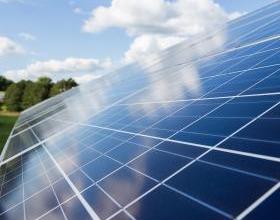Discover the RES Decree and entrust the professionalism of Myenergy with 100% of the projects admitted also in the II ° Register Group A and A-2.
The Fer GSE portal has been operational since 30 September 2019 for the registration of plants up to 1 MW and auction for plants over 1 MW.
Are you updated on the Fer Decree?
In this article you will find all the information that is not yet clear to you and the answers to the most frequently asked questions.
1. Are the incentive rates provided in Ministerial Decree FER1 compatible with self-consumption, dedicated collection and exchange on the spot?
First of all, it is good to clarify that self-consumed energy will not be able to enjoy the incentive. Only for systems up to 100 kW there is a premium of 10 Euro / MWh on all self-consumed energy (article 7 paragraph 12). The asbestos removal bonus of 12 Euro / MWh is also recognized on self-consumed energy (article 7 paragraph 10). The incentive rates are NOT compatible with dedicated collection and exchange on the spot.
For each group, the DECREE provides for power quotas admitted to incentives with time windows within which to apply for the same incentive.

2. What is the duration of the incentives?

For photovoltaic systems, the recognition of incentives is foreseen for a period of 20 years. The incentive runs from the date of entry into operation.
In the event that the photovoltaic system is stopped for:
network security reasons
recognized calamitous events
other causes of force majeure
modernization and enhancement not incentivized (extend max 6 months)
negative prices (when there are) or + 6 hours at price 0 (which suspend payment of the tariff)
The duration of the incentive will be extended for a period equivalent to the parking period.
3. For which plants is the Register mechanism and for which the Auctions?
Photovoltaic plants with power below 1 MWp access the incentives through the REGISTER mechanism, the access requirements are simplified compared to the auction mechanism:
There is no need to demonstrate economic requirements
There is no need to provide financial guarantees
A security is not applied if the plant is not built within the maximum terms established by the Decree
The deadlines for the construction of the register systems are shorter (19 months instead of 24).
The 1 MWp super-power photovoltaic plants access the incentives through the AUCTION mechanism to the downside.
5. How are the incentive rates structured?
The incentive rate obtained depends on the power of the system:
For plants that access the REGISTER and with a power lower than 100 kWp, an all-inclusive tariff is recognized, which also includes the purchase of energy or the dual tariff, or a tariff net of the value of energy at a zonal price (PMZ ). Once the choice has been made, it is possible for a maximum of two times to change from one mechanism to another.
For systems that access the REGISTER and with power exceeding 100 kWp, the dual tariff is recognized, a tariff net of the energy value at a zonal price.
6. How is the ranking drawn up to access the REGISTERS?
There are priority criteria which are as follows:
- Plants built on quarries, mines and exhausted landfills
- Spontaneous reduction offered on the value of the tariff
- Combine the charging stations for electric vehicles with the photovoltaic system (power at least 15% of the power of the photovoltaic system)
- Lower tariff value (penalizes smaller plants, which have higher tariff)
- Plant aggregates
- Prior completion date of procedure
- There is no sliding mechanism.
7. How is the AUCTION ranking determined?
Whoever offers the biggest discount prevails and if there is a parity of discount it is considered:
Legality rating
Quarries and landfills are exhausted

These are some of the issues and questions that are most asked to us by our customers. We will continue to deepen our knowledge of the RES1 DECREE, examining all its aspects. Follow us to stay updated on all the industry news and not to lose insights on the world of energy and energy efficiency.





